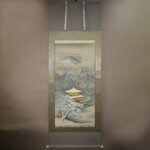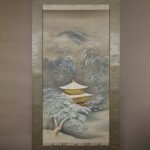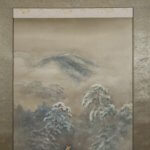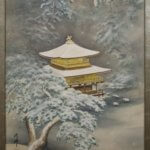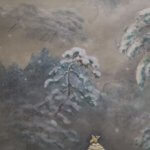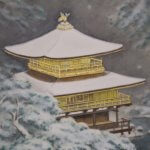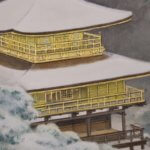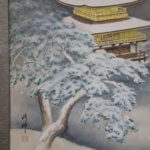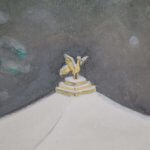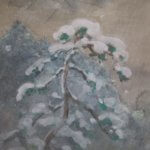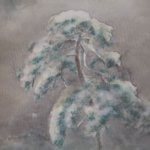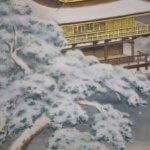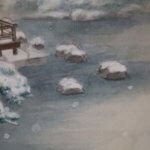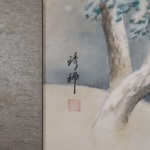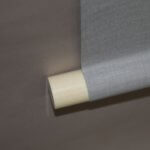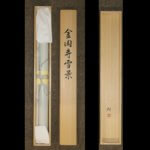Products Lineup
News / Blog
Other Menus
Kakejiku Hanging Scroll: Landscape Painting: Snowscape of the Kinkakuji Temple / Itō Shūki - Kinkaku-ji Sekkei
- Product ID
- 0261
- Name
- Itō Shūki
- Profile
Itō Shūki (伊東琇稀, 1930-) is a Japanese-style painter. Born in Hyōgo Pref. A self-educated person. Devoted many works to temples and shrines.
- Size
- 720mm x 1930mm
- Roller End Material
- Artificial ivory
- Material of the Work
- Silk
- Stock Condition
- Sold out
- Description
Itō Shūki was born in Kōbe, Hyōgo, to be a painter. He learned to paint on his own from his early age without a teacher to acquire painting skills from the Shijō and Kano schools. He was an accomplished artist, who dedicated his ceiling paintings and fusuma paintings to shrines and temples in Hyōgo.
This work depicts the Kinkakuji Temple (Kyōto) in winter, covered with snow. As a famous tourist spot, it in a snowy scenery is especially beautiful. The work’s composition devised by Itō Shūki, as if he were sketching in snow, looks at the temple from the upper front, which is quite unique. The snow on the pines is drawn with a delicate touch to allow the audience to feel even its softness of being just piled up. The color combination with the Kinkakuji Temple, painted in gold, also makes the work more interesting. The phoenix statue at the top of the Kinkakuji Temple is impressive with the depiction of the snow piled firmly on it.



